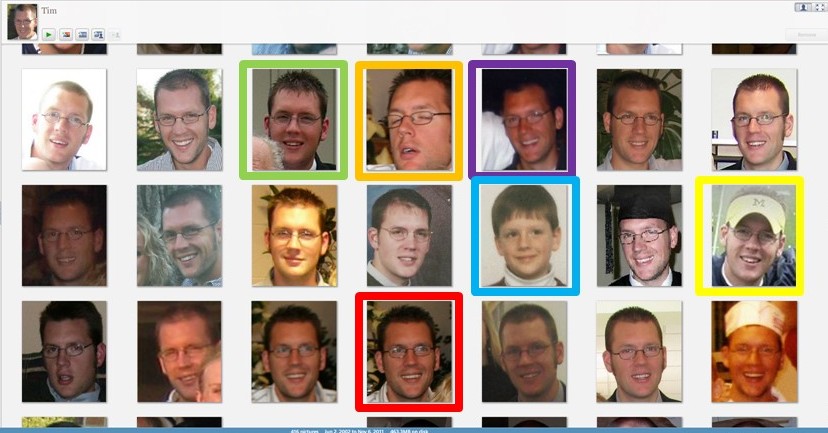So God created mankind in his own image,
in the image of God he created them;
male and female he created them.
Genesis 1:27
A few days ago, Apple introduced the iPhone X, the newest and most advanced version of the company’s signature handset. Among the noteworthy changes in the coming model is Apple’s latest innovation in smartphone security: facial recognition technology. The new login method, named “Face ID”, will use built-in cameras to process key aspects of the user’s mouth, nose, and chin; once the system makes a positive match with previously registered credentials, the user is granted immediate access to the phone’s contacts and various Candy Crush apps.
Like many of Apple’s pioneering changes, Face ID has been met with some skepticism. Will the software still recognize me if I’m in a dark bedroom? Will my phone know it’s me if I decide to grow a Fu Manchu? Will my identical twin sister be able to log in and start snapchatting from my account? Even members of the government, mindful about privacy implications, have expressed concern.
It’s likely that the Apple has made accommodations for all of these scenarios. After all, facial recognition isn’t entirely new. In development since the 1960’s, software-based image recognition has been used in many military and consumer products over the past decades.
What’s really cool is the way that facial recognition technology understands that the same people can appear differently across time and in different situations. Despite changes in hair or lighting, good software is able to understand who’s who. Check out this screencap showing how Picasa, Google’s freeware photo app, ID’ed my face amid a huge batch of pictures:

It can recognize me when I’m smiling (the red box) and it can find me when the shot is blurry (the purple box). It knows me if I’m thirty pounds heavier (the green box) and if I’m twenty years younger (the blue box). It sees me if I’m wearing a hat (the yellow box) or if I’ve passed out from modeling glue fumes (the orange box). No matter the changes or context, the unblinking eye of Google is able to identify the right image.
ASIDE: I’m even more impressed by the capabilities of facial-recognition technology when I notice how frequently people disagree about who looks like whom. You’ve had this happen to you, right? You say to your friend, “Have you ever noticed how much Travis next door looks like Richard Simmons?” And your friend says, “No; I don’t see that at all. I’ve always thought he looked like Val Kilmer.” Now, to you, Travis looks no more like Val Kilmer than Brad Pitt looks like Bob the Builder. But your friend won’t be convinced otherwise. It’s just astonishing how we can see people so differently while the machines always know.
One of the foundational beliefs of Christianity is that all people are created with another kind of identity, a sort of spiritual likeness. God, says Genesis 1:27, has made human beings in his own image.
For centuries, believers have discussed what being created in the imago Dei means. Does it have to do with the human conscience? Is it connected in some way with relationality or the ability to love? Does it mean that people have free will?
While there isn’t total agreement about what what imago Dei is, there’s a pretty clear sense about what it means. Bearing the image of God means that there are implications for human beings. There are expectations. Let me show you:
First, check out where the lines about God’s image appear in the sequence of the creation story.
In verse 26, God, the King and Maker of the world, has decreed to give human beings dominion on the earth. They are God’s choice to serve as caretakers and regents among the works of his hand. The plan is in place.
English translations of Genesis 1:27 often begin with the word “So.” That’s appropriate, since there is a similar connecting piece in the original Hebrew text. It’s also vitally important to understanding the flow of the narrative. Beginning the sentence with “So” means that what happens in verse 27 is a response to what happens in verse 26. Because God desired human beings to lead and serve in the world he made, he created them in his own image.
In the following verse, Genesis 1:28, God directs the image-bearers to begin the work of stewardship. Male and female are to be fruitful, multiply, and serve among God’s other creatures. But what’s often missed here is that Genesis describes God as “blessing” them with this work.
Creation care is not something we do grudgingly. It’s a gift, an opportunity and implication of being made in God’s image. Human beings are in this position because God has lovingly granted us a chance to share in the divine work.
Second, observe that the imago Dei was given to Adam and Eve, the progenitors of the entire human race. This was not a gift to Abraham’s children or David’s. Through our first parents, the likeness of God has been impressed upon all of humanity.
Image-bearing isn’t exclusive to a single race or culture. In fact, all of Adam and Eve’s descendants, even non-believers, participate as imago-bearers.
The Bible’s thinking here stands in stark contrast to what other ancient peoples believed. In neighboring nations – Egypt most notably – kings alone were believed to be the image-bearers of the Gods.
Genesis counters that thinking, and counters it hard. All people, from the queen on the throne to the servant-girl in the barn, bear God’s image. To see another child of Eve and Adam is to recognize, to positively ID, something of God himself.
This means that all persons have real intrinsic value. It also means that there is a solid basis for Christian ethics of justice and mercy. As equal bearers of the imago, men and women in all places are to be cherished, defended, and esteemed. Despite our different skin colors, economic classes, and homelands, we have this as a shared family resemblance. God’s likeness has been stamped on us all.
The problem, of course, is that Adam and Eve’s descendants haven’t lived out the implications of image-bearing. Sin and selfishness have smeared the image of God, leading to breakdowns in justice and compassion. Dominion has mutated into exploitation and we have failed to identify the King in the vulnerable, imprisoned, and hungry (Matthew 25:44).
Amazingly, however, the Creator provides his fallen image-bearers a path forward. 2 Corinthians 3:16-18 offers this hope:
When one turns to the Lord, the veil is removed… And all of us, with unveiled faces, seeing the glory of the Lord as though reflected in a mirror, are being transformed into the same image from one degree of glory to another; for this comes from the Lord, the Spirit.
Paul, the writer of this text, is articulating something extraordinary: Though we have failed in our responsibilities as image-bearers, looking to Jesus, the exact representation of the Father (Hebrews 1:3), allows us to see once more who we must be.
But there’s more. It’s not just that Jesus models who we must become. Paul says that Jesus actually makes us who we are to become. We are being “transformed into the same image.”
As Adam and Eve’s children, we are marred as image-bearers. But born again, changed into new glory in Jesus, we are remade into the eternal likeness of God the Son. And because we bear the image of the Son, through the Spirit, we are given eternal access to the Father.


